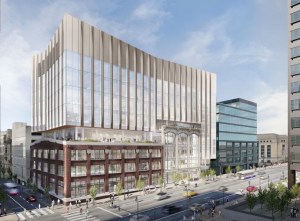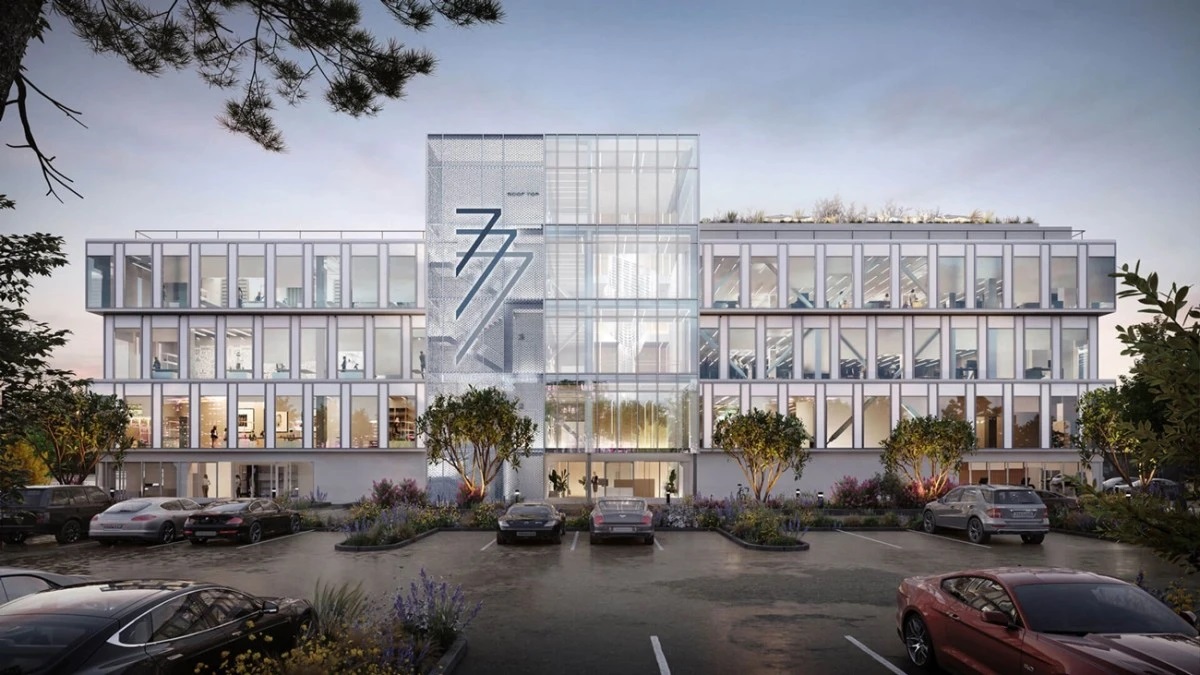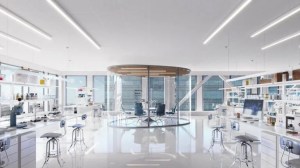Exploring Redevelopment Opportunities Within Life Sciences
When is adaptive reuse the right choice in this red-hot sector? Experts weigh in.
The life sciences industry carried on at full speed during the pandemic, accelerated by the development of new vaccines and related technologies. Due to strong capital flows, life sciences companies continued to expand their footprints in most markets. As a result, demand for this niche space began outpacing supply, prompting life science businesses to pursue alternative means—such as adaptive reuses—to thrive in this highly competitive realm.
According to a recent Cushman & Wakefield life sciences report, total U.S. National Institute of Health funding hit $35.8 billion in 2021, outpacing pre-pandemic levels and marking an all-time high. At the same time, life sciences employment has been faring better than the overall job market. Year-to-date through August, there were a total of 413,120 life sciences occupation postings in the country, a 28 percent increase from the same interval last year.
Catering to life science professionals’ needs
The specialists who work in life science facilities have unique needs when it comes to how these spaces look like. Presidio Bay Ventures recognizes and prioritizes the human factor without compromising the technical requirements of their facilities. The company has 3.9 million square feet of new construction and adaptive reuse valued at nearly $3.3 billion across the country.
“Historically, one the biggest fallacies developers of life science, lab and R&D facilities have made is assuming that scientists and researchers differ from white-collar office workers, resulting in projects that miss the human factor in the core building design from a health, wellness and sustainability perspective,” Cyrus Sanandaji, managing director of Presidio Bay Ventures, told Commercial Property Executive.
Chad Phillips, global head of office at Nuveen Real Estate, identified the human factor as one of the key aspects that make the sector thrive, along with speed to market and space flexibility.
“The inherit nature of the bioscience sector can be volatile and the ability to secure the appropriate equity to further a tenant’s business is paramount,” Phillips said. “As a result, success of early stages companies is based on milestones—FDA approval, series funding etc.—that directly impact their use of space.”
The same Cushman & Wakefield report found that 50 percent of the life sciences venture capital deals year-to-date through August involved a seed or early-stage deal, with 38 percent of these deals involving companies that are in the early growth stages as they seek to advance their operations—including the expansion of their existing lab and office footprint.
READ ALSO: Pittsburgh’s Life Science Sector Shows Off Potential
When executed correctly, adaptive-reuse opportunities have the capacity to meet demand for niche space while repurposing obsolete structures.
According to Sanandaji, in order to determine if a building is a good candidate for conversion, a number of basic criteria need to be considered. For example, column spacing, ceiling heights and structural loads would be extremely cost prohibitive—if not impossible—to modify.
Other aspects such as the ability to add or expand a loading dock, freight elevators, cut new shafts into the structure for vertical and horizontal ventilation, are also important to take into account. In addition to these physical considerations, location and proximity also play a prominent role for life science companies as these tenants generally prefer to cluster around other similar firms within innovation districts.
Why location matters
Sanandaji believes that certain submarkets such as San Carlos and Redwood City in California—two up-and-coming life sciences hubs—will perform exceptionally well given their walkability, amenity-rich surroundings and transit-oriented locations.
“Locating projects in these types of submarkets, while emphasizing the human factor in our design, allows our tenants to thrive by maximizing recruitment, retention and productivity,” he said.
Presidio Bay Ventures has three active life science redevelopments in San Carlos. One of them is 777 Industrial Road, a former 45,000-square-foot auto dealership which will become a 147,000-square-foot life science building with state-of-the-art amenities, and core and shell infrastructure. The firm also recently closed on the acquisition of 642 Quarry Road, a light industrial complex, and is pursuing entitlements to develop a 500,000-square-foot life science campus.
Presidio Bay has been active in other California markets as well, including San Francisco, Mountain View and Palo Alto, all of which have seen continued R&D and lab demand growth.
“We believe these projects will continue to expand their respective locales as emerging innovation districts. We are currently focused on the Bay Area given our expertise and local presence, which puts us at an advantage relative to other developers,” said Sanandaji. “While we have looked at other markets, we are confident there is ample opportunity here for this sector given the supply and demand.”
READ ALSO: Is a Life Science Real Estate Bubble Forming?
Nuveen is also working on an adaptive-reuse project in the Playa Vista area of West Los Angeles. Earlier this year, the firm, alongside HATCHspaces and health-care developer NexCore Group, acquired a 56,300-square-foot industrial asset which will be redeveloped as a biomanufacturing facility for treatments for antibiotic-resistant and difficult to treat bacterial infections.
Breakthrough Properties—a joint venture between Tishman Speyer and Bellco Capital—also has multiple life sciences redevelopments in its portfolio, including Boulder 38 by Breakthrough in Boulder, Colo., an office-to-life sciences conversion project featuring 164,000 square feet of office, lab and flex space. Additionally, the company is working on 2300 Market Street in Philadelphia’s Center City submarket—with plans to redevelop the former industrial site to support 200,000 square feet of life science space. In San Diego, the developer has two projects in underway: the Torrey View by Breakthrough campus and Torrey Plaza, an office-to-lab conversion.
Going forward, Phillips expects conversions in core markets to continue, though at a more moderate pace.
“We have seen a significant increase in deliveries over the past 5 years due to the astounding increase in market rental rates, but we have seen absorption scale back a bit,” he said.
He expects the current good manufacturing practices (cGMP) space subsector to grow in core and emerging submarkets alike. cGMP is less dependent on location and Nuveen is seeing further expansion into new markets due to both supply constraints in core markets and/or cost and logistics considerations. Furthermore, modular labs is another trend gaining ground as the demand for flexibility from tenants increases.











You must be logged in to post a comment.